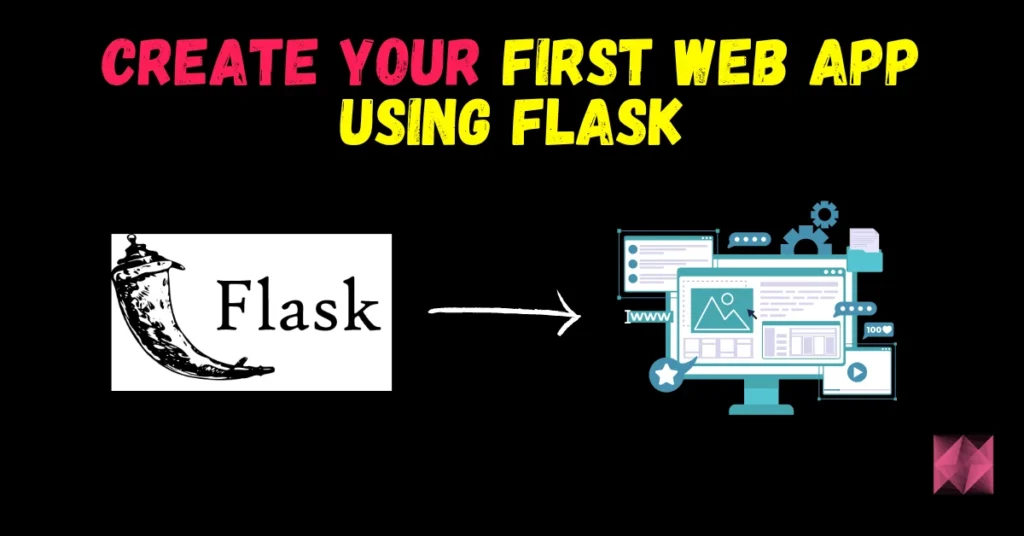So guys here are some of the best courses for data science, tableau, SQL, and Python on Udemy. These are some courses that even I did on my Data Science journey to enhance my skills.
The first course on this list ‘Complete Python Bootcamp From Zero to Hero in Python’ by Jose Portilla is my personal favorite. So without any further due, let’s do it.
1. Complete Python Bootcamp From Zero to Hero in Python
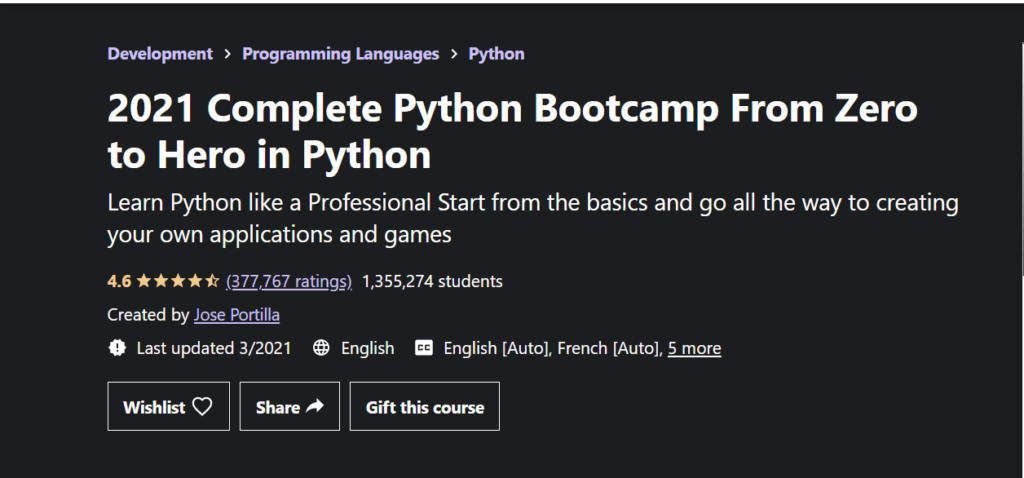
What you’ll learn
- Learn to use Python professionally, learning both Python 2 and Python 3!
- Create games with Python, like Tic Tac Toe and Blackjack!
- Learn advanced Python features, like the collections module and how to work with timestamps!
- Learn to use Object Oriented Programming with classes!
- Understand complex topics, like decorators.
- Understand how to use both the Jupyter Notebook and create .py files
- Get an understanding of how to create GUIs in the Jupyter Notebook system!
- Build a complete understanding of Python from the ground up!
Requirements
- Access to a computer with an internet connection.
2. Statistics for Data Science and Business Analysis
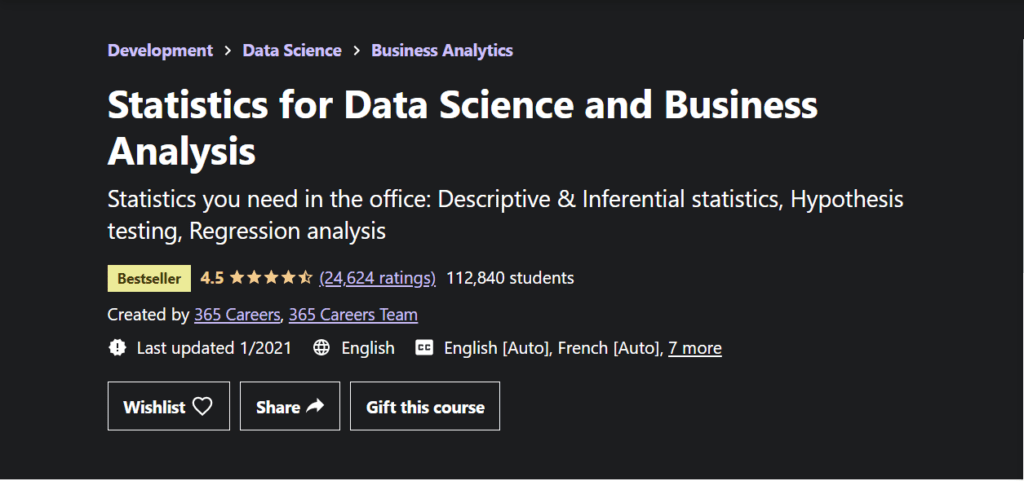
What you’ll learn
- Understand the fundamentals of statistics
- Learn how to work with different types of data
- How to plot different types of data
- Calculate the measures of central tendency, asymmetry, and variability
- Calculate correlation and covariance
- Distinguish and work with different types of distributions
- Estimate confidence intervals
- Perform hypothesis testing
- Make data driven decisions
- Understand the mechanics of regression analysis
- Carry out regression analysis
- Use and understand dummy variables
- Understand the concepts needed for data science even with Python and R!
Requirements
- Absolutely no experience is required. We will start from the basics and gradually build up your knowledge. Everything is in the course.
- A willingness to learn and practice
3. R Programming A-Z™: R For Data Science With Real Exercises!
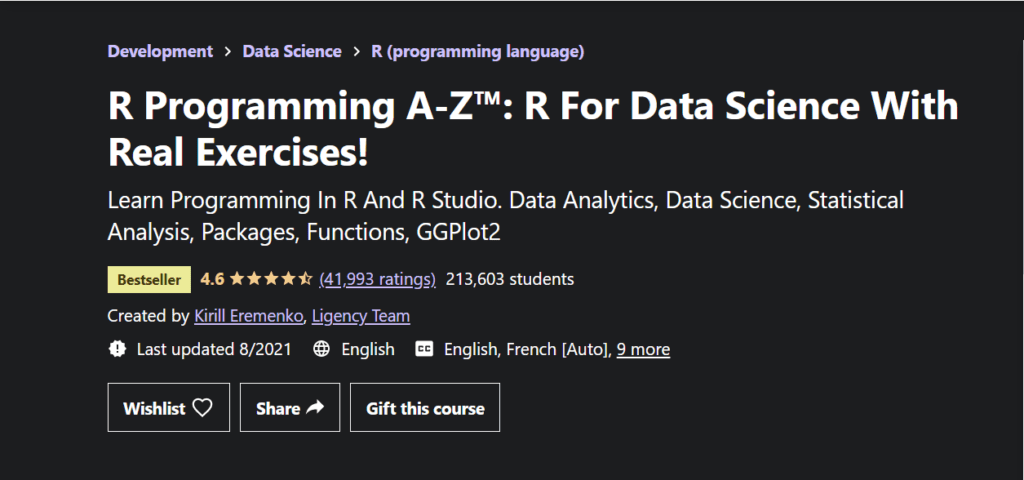
What you’ll learn
- Learn to program in R at a good level
- Learn how to use R Studio
- Learn the core principles of programming
- Learn how to create vectors in R
- Learn how to create variables
- Learn about integer, double, logical, character and other types in R
- Learn how to create a while() loop and a for() loop in R
- Learn how to build and use matrices in R
- Learn the matrix() function, learn rbind() and cbind()
- Learn how to install packages in R
- Learn how to customize R studio to suit your preferences
- Understand the Law of Large Numbers
- Understand the Normal distribution
- Practice working with statistical data in R
- Practice working with financial data in R
- Practice working with sports data in R
Requirements
- No prior knowledge or experience is needed. Only a passion to be successful!
4. SQL – MySQL for Data Analytics and Business Intelligence
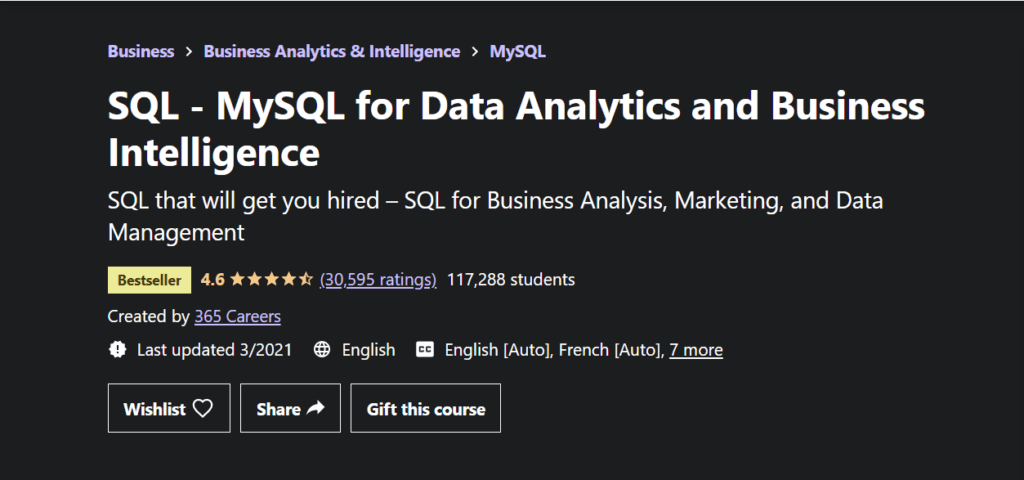
What you’ll learn
- Become an expert in SQL
- Learn how to code in SQL
- Boost your resume by learning an in-demand skill
- Create, design, and operate with SQL databases
- Start using MySQL – the #1 Database Management System
- Prepare for SQL developer, Database administrator, Business Analyst, and Business Intelligence job opportunities
- Adopt professionally tested SQL best practices
- Gain theoretical insights about relational databases
- Work with a sophisticated real-life database throughout the course
- Get maximum preparation for real-life database management
- Add data analytical tools to your skillset
- Develop business intuition while solving tasks with big data
- Study relational database management theory that you will need in your workplace every day
- Learn how to create a database from scratch
- The ability to take control of your dataset – insert, update, and delete records from your database
- Be confident while working with constraints and relating data tables
- Become a proficient MySQL Workbench user
- Understand complex topics, like decorators.
- Acquire top-notch coding techniques and best practices
- Know how to answer specific business questions by using SQL’s aggregate functions
- Handle complex SQL joins with ease
- Approach more advanced topics in programming like SQL’s triggers, sequences, local and global variables, indexes, and more
- Merge coding skills and business acumen to solve complex analytical problems
- Become a proficient SQL user by writing flawless and efficient queries
- Tons of exercises that will solidify your knowledge
- The freedom to query anything you like from a database
Requirements
- No prior experience is required. We will start from the very basics
5. Tableau A-Z: Hands-On Tableau Training for Data Science
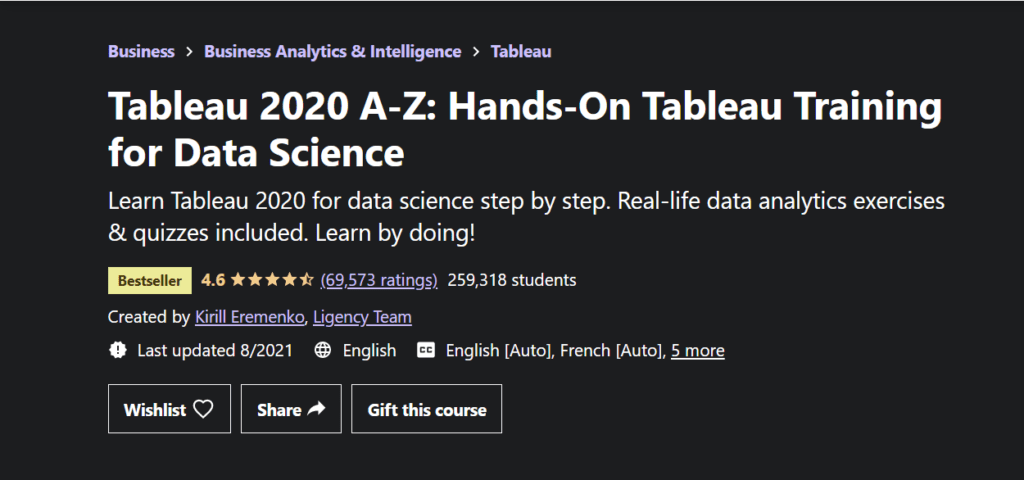
What you’ll learn
- Install Tableau Desktop 2020
- Connect Tableau to various Datasets: Excel and CSV files
- Create Barcharts
- Create Area Charts
- Create Maps
- Create Scatterplots
- Create Piecharts
- Create Treemaps
- Create Interactive Dashboards
- Create Storylines
- Understand Types of Joins and how they work
- Work with Data Blending in Tableau
- Create Table Calculations
- UnWork with Parameters
- Create Dual Axis Charts
- Create Calculated Fields
- Create Calculated Fields in a Blend
- Export Results from Tableau into Powerpoint, Word, and other software
- Work with Timeseries Data (two methods)
- Creating Data Extracts in Tableau
- Understand Aggregation, Granularity, and Level of Detail
- Adding Filters and Quick Filters
- Create Data Hierarchies
- Adding Actions to Dashboards (filters & highlighting)
- Assigning Geographical Roles to Data Elements
- Advanced Data Preparation (including latest updates in Tableau)
Requirements
- Basic knowledge of computers.
6. Machine Learning A-Z™: Hands-On Python & R In Data Science
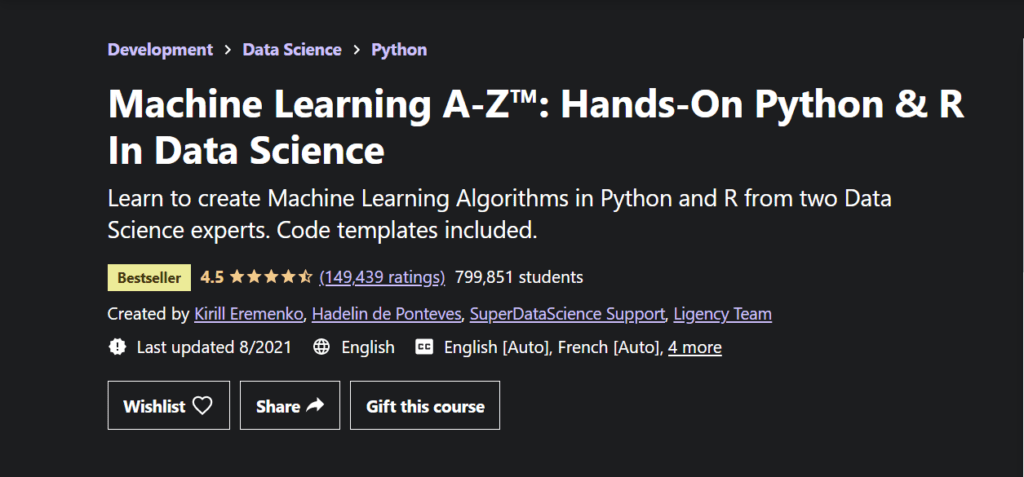
What you’ll learn
- Master Machine Learning on Python & R
- Have a great intuition of many Machine Learning models
- Make accurate predictions
- Make powerful analysis
- Make robust Machine Learning models
- Create strong added value to your business
- Use Machine Learning for personal purpose
- Handle specific topics like Reinforcement Learning, NLP and Deep Learning
- Handle advanced techniques like Dimensionality Reduction
- Know which Machine Learning model to choose for each type of problem
- Build an army of powerful Machine Learning models and know how to combine them to solve any problem
Requirements
- Just some high school mathematics level.
7. Python for Data Science and Machine Learning Bootcamp
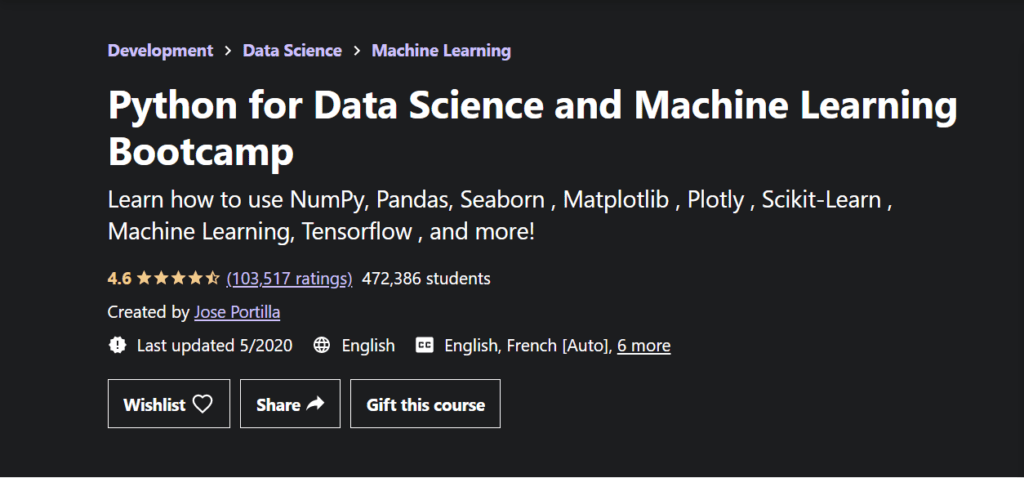
What you’ll learn
- Use Python for Data Science and Machine Learning
- Use Spark for Big Data Analysis
- Implement Machine Learning Algorithms
- Learn to use NumPy for Numerical Data
- Learn to use Pandas for Data Analysis
- Learn to use Matplotlib for Python Plotting
- Learn to use Seaborn for statistical plots
- Use Plotly for interactive dynamic visualizations
- Use SciKit-Learn for Machine Learning Tasks
- K-Means Clustering
- Logistic Regression
- Linear Regression
- Random Forest and Decision Trees
- Natural Language Processing and Spam Filters
- Neural Networks
- Support Vector Machines
Requirements
- Some programming experience
- Admin permissions to download files
8. The Data Science Course: Complete Data Science Bootcamp
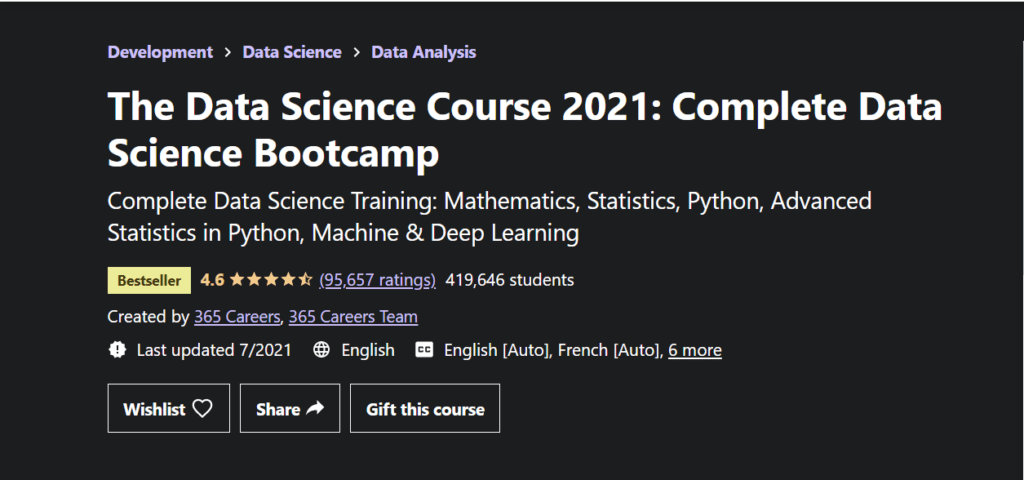
What you’ll learn
- The course provides the entire toolbox you need to become a data scientist
- Fill up your resume with in demand data science skills: Statistical analysis, Python programming with NumPy, pandas, matplotlib, and Seaborn, Advanced statistical analysis, Tableau, Machine Learning with stats models and scikit-learn, Deep learning with TensorFlow
- Impress interviewers by showing an understanding of the data science field
- Learn how to pre-process data
- Understand the mathematics behind Machine Learning (an absolute must which other courses don’t teach!)
- Start coding in Python and learn how to use it for statistical analysis
- Perform linear and logistic regressions in Python
- Carry out cluster and factor analysis
- Be able to create Machine Learning algorithms in Python, using NumPy, statsmodels and scikit-learn
- Apply your skills to real-life business cases
- Use state-of-the-art Deep Learning frameworks such as Google’s TensorFlowDevelop a business intuition while coding and solving tasks with big data
- Unfold the power of deep neural networks
- Improve Machine Learning algorithms by studying underfitting, overfitting, training, validation, n-fold cross validation, testing, and how hyperparameters could improve performance
- Warm up your fingers as you will be eager to apply everything you have learned here to more and more real-life situations
Requirements
- No prior experience is required. We will start from the very basics
- You’ll need to install Anaconda. We will show you how to do that step by step
- Microsoft Excel 2003, 2010, 2013, 2016, or 365
9. Machine Learning, Data Science and Deep Learning with Python
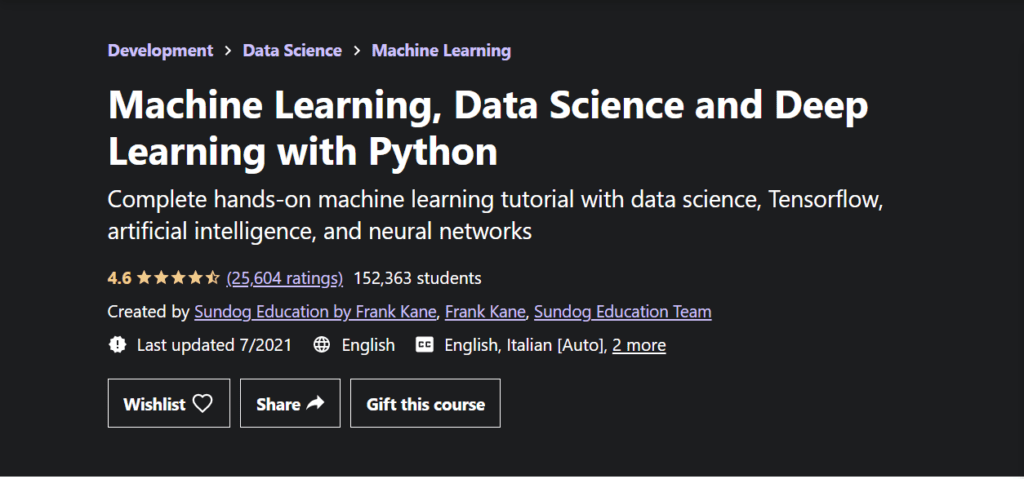
What you’ll learn
- Build artificial neural networks with Tensorflow and Keras
- Classify images, data, and sentiments using deep learning
- Make predictions using linear regression, polynomial regression, and multivariate regression
- Data Visualization with MatPlotLib and Seaborn
- Implement machine learning at massive scale with Apache Spark’s MLLib
- Understand reinforcement learning – and how to build a Pac-Man bot
- Classify data using K-Means clustering, Support Vector Machines (SVM), KNN, Decision Trees, Naive Bayes, and PCA
- Use train/test and K-Fold cross validation to choose and tune your models
- Build a movie recommender system using item-based and user-based collaborative filtering
- Clean your input data to remove outliers
- Design and evaluate A/B tests using T-Tests and P-Values
Requirements
- You’ll need a desktop computer (Windows, Mac, or Linux) capable of running Anaconda 3 or newer. The course will walk you through installing the necessary free software.
- Some prior coding or scripting experience is required.
- At least high school-level math skills will be required.
10. Data Science: Natural Language Processing (NLP) in Python
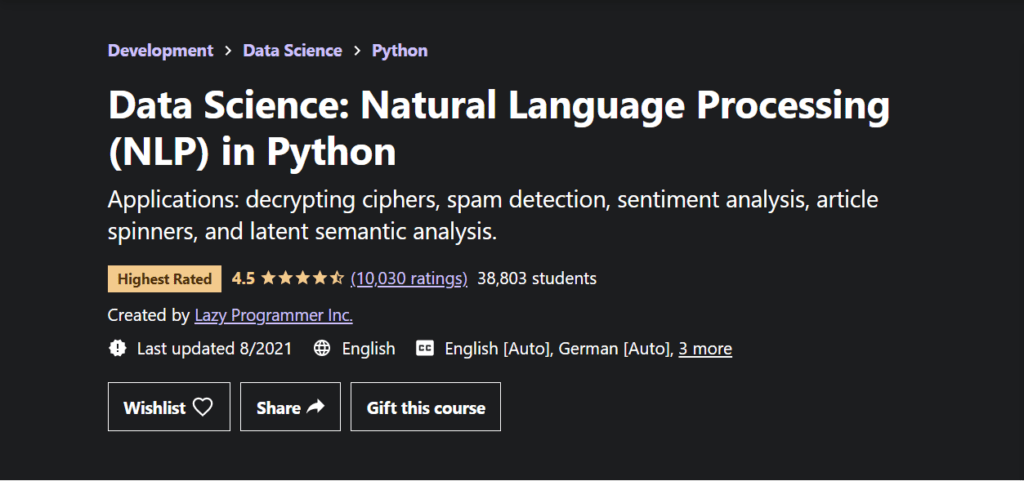
What you’ll learn
- Write your own cipher decryption algorithm using genetic algorithms and language modeling with Markov models
- Write your own spam detection code in Python
- Write your own sentiment analysis code in Python
- Perform latent semantic analysis or latent semantic indexing in Python
- Have an idea of how to write your own article spinner in Python
Requirements
- Install Python, it’s free!
- You should be at least somewhat comfortable writing Python code
- Know how to install numerical libraries for Python such as Numpy, Scipy, Scikit-learn, Matplotlib, and BeautifulSoup
- Take my free Numpy prerequisites course (it’s FREE, no excuses!) to learn about Numpy, Matplotlib, Pandas, and Scikit-Learn, as well as Machine Learning basics
- Optional: If you want to understand the math parts, linear algebra and probability are helpful
Check out my Machine Learning, Deep Learning, OpenCV, NLP, and Flask projects.
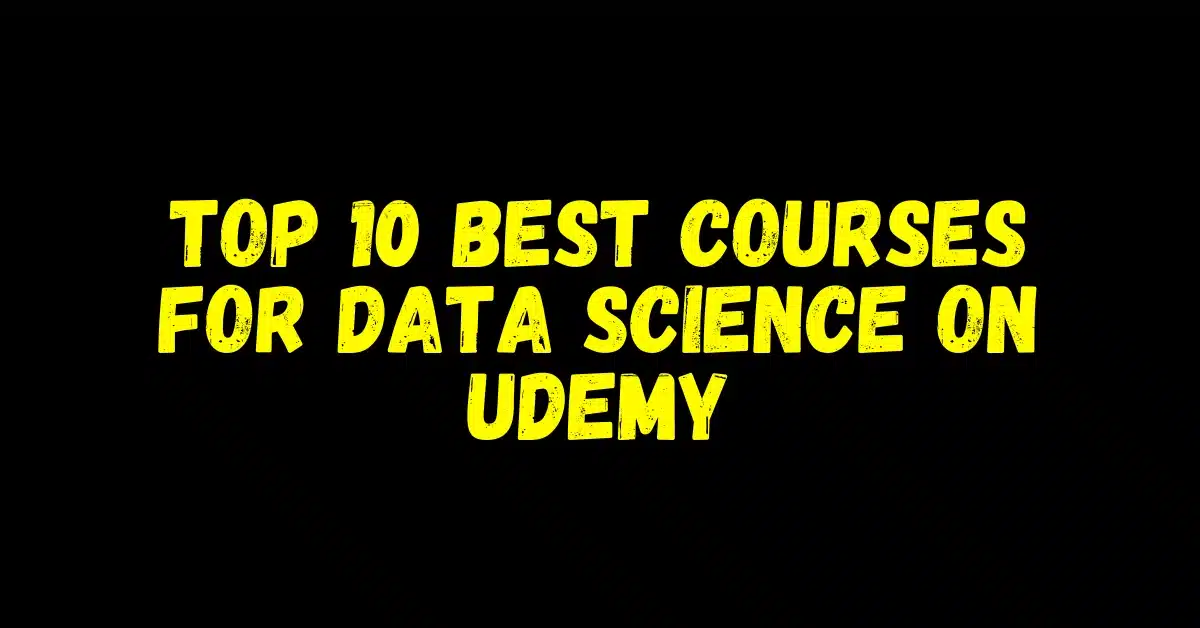

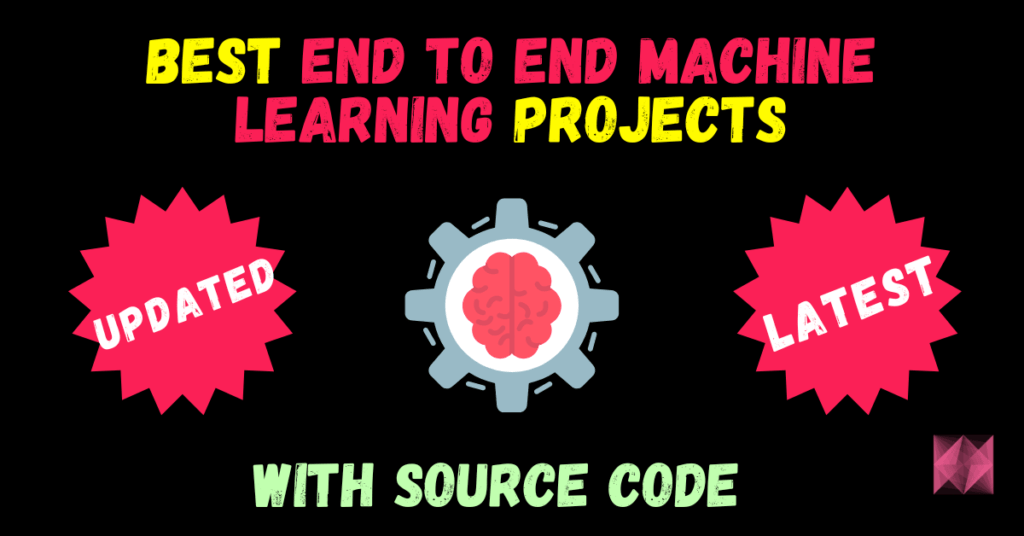
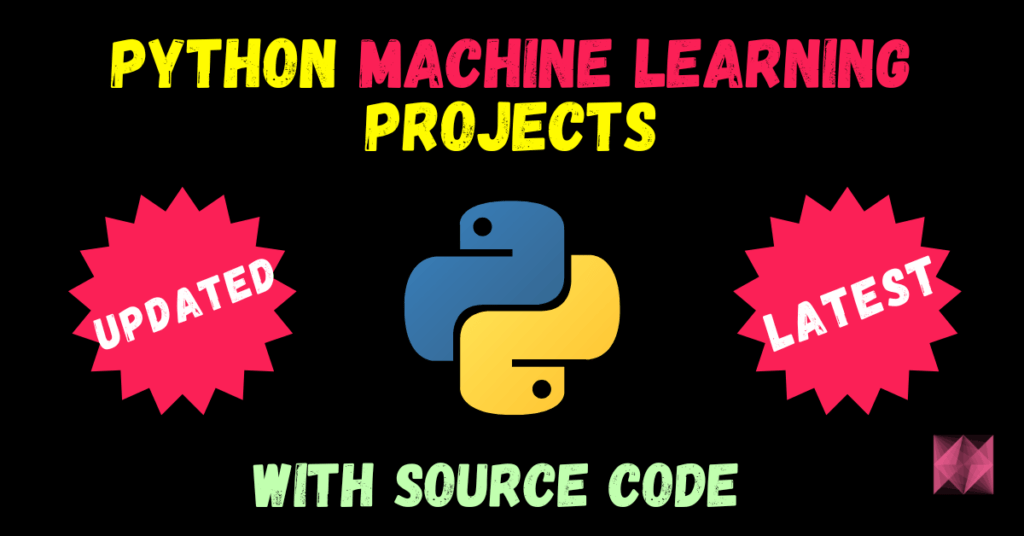

![[Latest] 15+ Best Python Mini Projects – 2025](https://machinelearningprojects.net/wp-content/uploads/2023/05/best-python-mini-projects-1024x536.webp)
